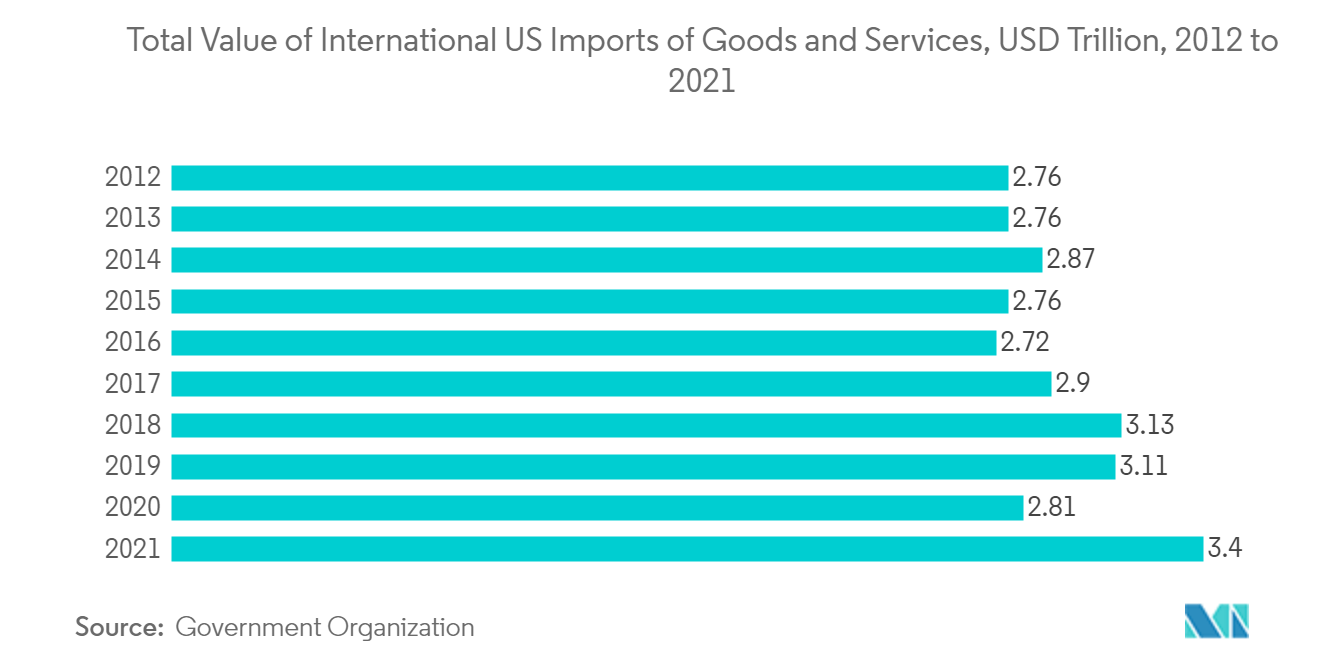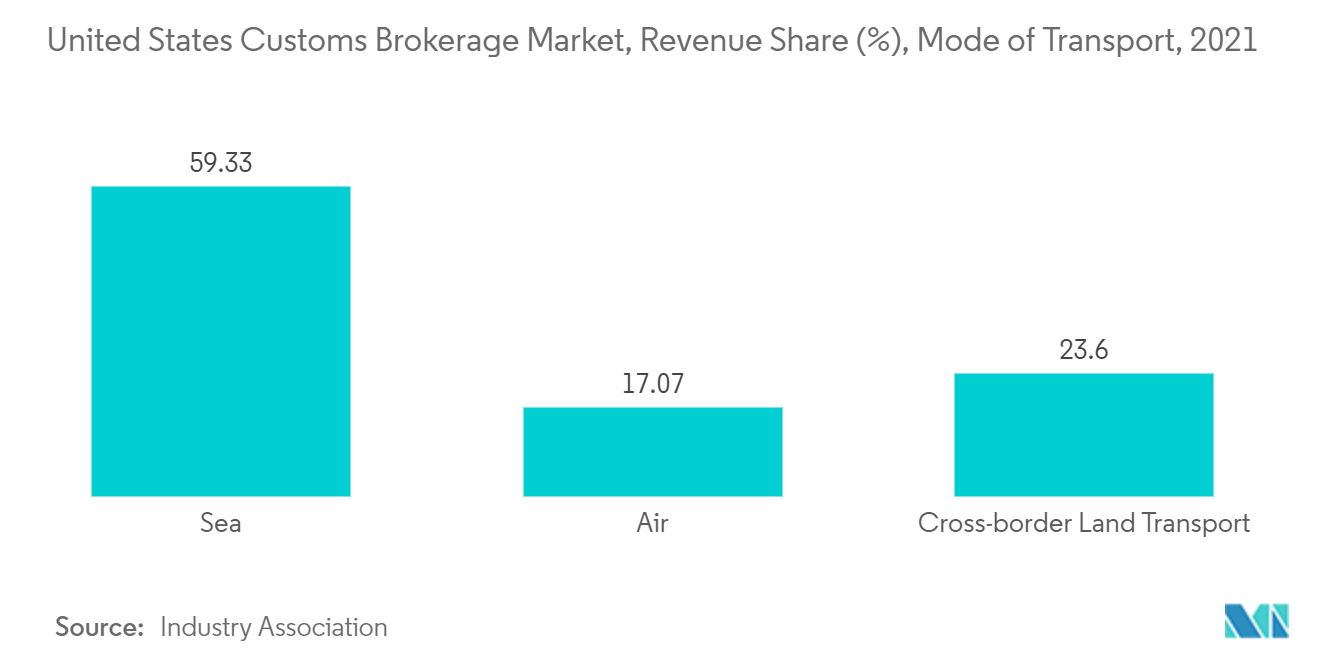Market Trends of USA Customs Brokerage Industry
Growth in Imports Driving the US Customs Brokerage Market
- Following a decrease in inflation, imports into the United States increased by USD 4.2 billion to USD 317.6 billion in December 2022, up from an 11-month low of USD 313.4 billion the previous month. This indicates a recovery in domestic demand. Purchases of products increased by USD 4.5 billion, driven by an increase in purchases of consumer items, particularly smartphones and other home goods, as well as automobiles, parts, and engines (up by USD 4.1 billion) (up USD 2.9 billion).
- The manufacturing sector depends on timely and reliable deliveries of raw materials or semi-finished products as inputs to further processing. It also requires finished products to be transported to warehouses or distribution centers. The major determinant of manufacturing demand is consumer spending. The trend toward just-in-time (JIT) inventories has also created increased demand for transportation services as manufacturers seek smaller and more frequent deliveries. JIT allows companies to improve profitability by purchasing materials only as needed, thereby reducing inventory costs. For such timely delivery needs, efficient customs clearance is of high importance, driving the need for customs brokers.

Sea Transportation Dominates the US Customs Brokerage Market
- Maritime freight transport is the major mode of transport for international transport of goods. The number of customs entries by mode is highest in the case of sea transport, driving the revenue of the customs brokerage market. The demand for air freight transport is increasing with growing demand for perishables, chemicals & valuables, and the rising demand for just-in-time production of goods. The US customs brokerage market for air freight transport is expected to witness faster growth over the forecast period when compared to other modes of transport.
- The road freight movement of goods is the dominant mode of transportation in the United States and is an important factor for economic growth. The cross-border land transport, including road, rail, and pipeline transport between the US and North American partners Canada and Mexico, is increasing steadily. It is expected to grow in the future, driven by USMCA. The customs brokerage services for cross-border land transport are highly fragmented, with many small brokers operating at each border port of entry.


